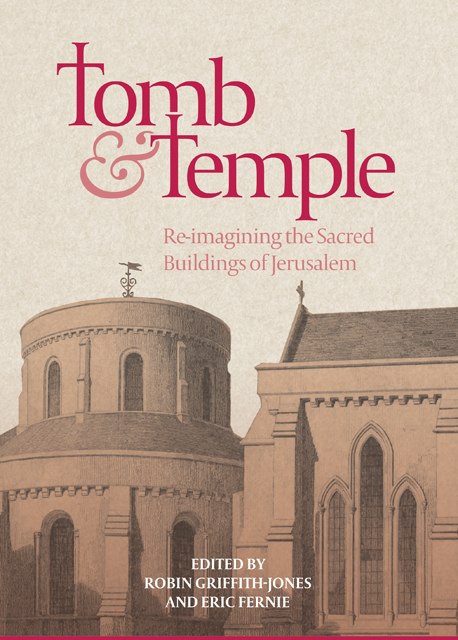Book contents
- Frontmatter
- Contents
- Illustrations
- Preface
- Contributors
- Abbreviations
- Editors’ Note
- Introduction
- Part I Re-presenting Jerusalem
- Part II The Church of the Holy Sepulchre
- Part III The Noble Sanctuary / The Temple Mount
- Part IV The Orthodox Churches
- Part V Round Churches in the West
- Appendix: The Knights’ Effigies: Newly Discovered Drawings by John Guillim, c. 1610
- Epilogue
- Index
- Already Published
11 - Jerusalems in the Caucasus?
Published online by Cambridge University Press: 17 January 2023
- Frontmatter
- Contents
- Illustrations
- Preface
- Contributors
- Abbreviations
- Editors’ Note
- Introduction
- Part I Re-presenting Jerusalem
- Part II The Church of the Holy Sepulchre
- Part III The Noble Sanctuary / The Temple Mount
- Part IV The Orthodox Churches
- Part V Round Churches in the West
- Appendix: The Knights’ Effigies: Newly Discovered Drawings by John Guillim, c. 1610
- Epilogue
- Index
- Already Published
Summary
Jerusalem has always been a major focus for Christians in the Caucasus. The imagined city played a role in the foundation myths of both Armenia and Georgia, and the real city attracted pilgrims over the centuries. There is ample evidence for the presence of people from the Caucasus in and around the Holy City. Their formal presence is preserved in the inscriptions that accompany some of the earliest Christian mosaic floors to survive from around Jerusalem; and their informal presence is marked by the graffiti that medieval and later pilgrims have left throughout the region. In this chapter I examine the ways in which the idea of Jerusalem returned to the Caucasus: how it was embodied in the art and architecture of the region. Centralised buildings play a very important role in the architecture of the Caucasus, but I will argue that they were not seen as imitations of the Holy Sepulchre: Jerusalem was seen very differently in this region compared to the west of Europe. A different building type became associated with the holy places. The chapter has two parts: a general consideration of the status of Jerusalem in the traditions of the Caucasus, and then a more detailed consideration of the centralised buildings of the region and the alternative building types that can be associated with the Holy City.
The Topography Of Jerusalem And Georgia
In Georgia, the arrival of Christianity in the early fourth century in the east of the country – the regions of Kartli and Kakheti – is linked to the evangelism of St Nino. Her tale is told in Moktsevai Kartlisai (the chronicle of the conversion of Kartli), which was probably written in the course of the seventh century. The text recounts St Nino’s works to convert Mirian, the king of the region, who then led the conversion of all his subjects. Mirian was inspired by a vision to mark his conversion and that of his realm by erecting three monumental crosses across his kingdom. Two crosses were set up in prominent hilltop locations at Tkhoti to the west and at Ujarma to the east. The third was set up in the heart of his kingdom on the plateau overlooking Mtskheta, the old Georgian capital at the confluence of the Mtkvari and Aragvi rivers [Figs 11.1, 11.6].
- Type
- Chapter
- Information
- Tomb and TempleRe-imagining the Sacred Buildings of Jerusalem, pp. 211 - 232Publisher: Boydell & BrewerPrint publication year: 2018

